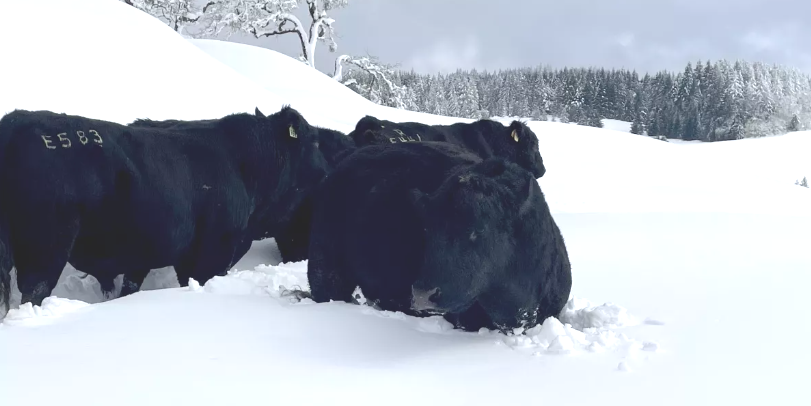Los Angeles Times
Lauren Sizemore, a rancher in Kneeland, Calif., knew a storm was coming but had no warning that it would be so big. Her ranch is home to about 300 cattle that have been trapped by historic snowfall, unable to access food.
“It is absolutely heart-wrenching to know we have cattle out there that we cannot get to. It is causing many sleepless nights,” she said, “but there is nothing we can do about it.”
On Monday and Tuesday, Sizemore’s remote ranch — about an hour from Eureka — received air-dropped bales of hay as part of an emergency operation by local officials.
Location trackers on her animals enabled Sizemore, 37, to provide exact coordinates for where to drop the bales.
She is grateful to the network of helpers and officials who sprung up to assist ranchers and their cattle. Now she’s waiting for enough snow to thaw so she can survey her losses.
“Traditionally, we get snow maybe once or twice a winter, but this year it’s just been one storm after the next, and it’s never gotten warm enough to melt off the snow at lower elevations,” said Tran Beyea, a spokesman for the California Department of Forestry and Fire Protection’s Humboldt-Del Norte Unit.
“Ranch lands that are usually starting to green up around now are covered in snow — deep snow,” he said. The problem is exacerbated because ranchers often aim for calves to be born at the beginning of spring to ensure there’s plenty of fresh grass for them to eat.
Calves are “now being born in freezing conditions,” Beyea said, with their “food covered in snow.”
Humboldt County Supervisor Michelle Bushnell, herself a rancher, began reaching out to others as the snow accumulated, asking about their cattle.
“We can’t find them — there’s too much snow,” one rancher told her.
“There’s no grass” for them to feed on, another said.
Officials devised a system: Ranchers gather surplus hay and drop it at Rohnerville Airport, near Fortuna, where personnel from the Humboldt County Office of Emergency Services and Sheriff’s Office help load it into helicopters.
Two helicopters from Cal Fire and two from other agencies then distribute the hay — about eight bales at a time — to some 35 ranches across Mendocino, Humboldt and Trinity counties. In all, the fate of about 2,500 cattle hangs in the balance.
“It’s just dire up here with the animals and snowpack,” Bushnell said, thanking the various agencies that came together to make the hay drops possible.
“As long as the weather conditions remain cold and the snow accumulations aren’t melting off, the mission will continue,” Beyea said.
Once roads are cleared, ranchers can begin to take stock. “We know that livestock are dying,” Bushnell said, but she hopes many animals will be spared as a result of the supply missions.
Because of extremely bad weather, Sizemore said her ranch expects much higher death rates among the calves born recently. Poor nutrition for cattle that were stranded will also affect breeding going forward.
The rancher expects her livestock to be affected for the next 18 months.














